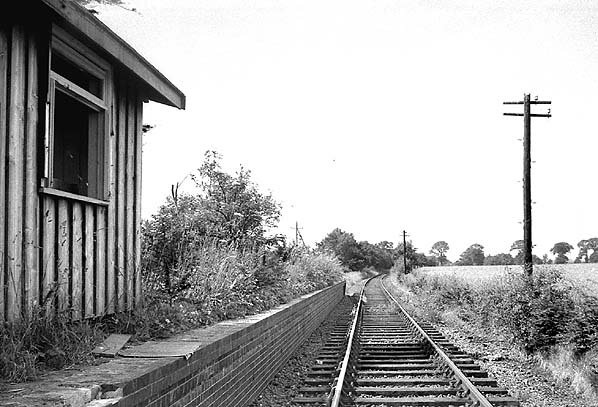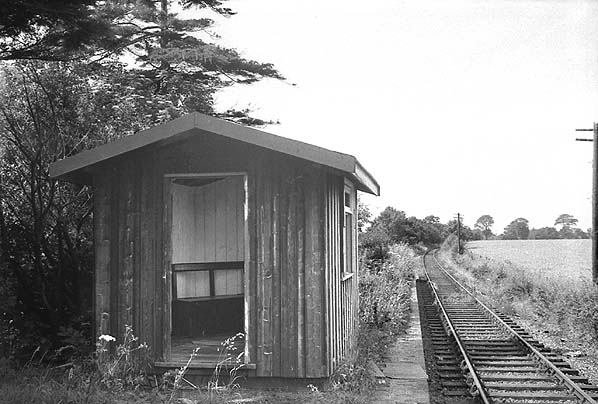Notes: Nast Hyde Halt was opened in 1910 to serve a new residential area; local folklore also says that it was opened at the instigation of one local householder Oliver Bury who used the line to commute to Kings Cross. It replaced a former siding on the same site. The station had a timber faced platform with a timber waiting room. At some time the platform was rebuilt with brick facing and a new waiting room was provided.
After track lifting in 1969 the platform became heavily overgrown and remained like that until 2014 when a team of volunteers led by local postman and charity fundraiser Mike Izzard. Mike took his inspirtation from the restoration of Wheathampstead on the Hertford - Dunstable line where the station has been restored as a community asset. As at Wheathampstead there was no intention to restore the station to its original condition. The restoration took over four years and was completed in June 2019 when a short panel of track was laid between the halt and the former level crossing on Ellenbrook Lane. Mike Izzard has his own web site devoted to Nast Hyde Halt.
BRIEF HISTORY OF THE HATFIELD & ST ALBANS RAILWAY
The Hatfield and St Albans Railway Company was incorporated by Act of Parliament on 30 June 1862. It had been promoted by various landowners in Hatfield and St Albans and supported by the Great Northern Railway, which saw the line as a means of regaining traffic lost to the London and North Western Railway since 1858 as a result of the opening of its Watford to St Albans line. The Great Northern agreed to contribute £20,000 to the total estimated cost of £88,000. Two lines were authorised: the first through the parishes of Hatfield, St Peter, St Stephen and St Albans to a junction with the London and North Western's St Albans line; the second from the parish of Hatfield to a junction on the northern side of Hatfield station on the Great Northern Main Line. The Great Northern opened its own St Albans station and was granted running powers into the LNWR station; the LNWR received reciprocal rights over the link line between the stations.
The new line opened on 1 September 1865 with one planned intermediate station at Springfield (renamed Smallford in 1879), although this was not ready in time. The Great Northern worked the line from the beginning and eventually absorbed the railway company on 1 November 1883.
 The initial weekday service consisted of eight trains in each direction from St Albans and King's Cross, with a journey time of 15 minutes between Hatfield and St Albans. On weekdays, services went through to the LNWR's St Albans station, but on Sundays they terminated at the GNR station. Services were drawn by Sharp 2-2-2Ts until the 1870s, when Sharp 0-4-2T rebuilds and Sturrock 0-4-2Ts were used. The opening of the Midland Main Line through St Albans in 1868 saw receipts fall on the line and the Hatfield and St Albans Railway was unable to pay its debts. A receiver was appointed and the independent company had no choice but to be absorbed by the Great Northern, this being formalised by an Act of Parliament in 1883. The initial weekday service consisted of eight trains in each direction from St Albans and King's Cross, with a journey time of 15 minutes between Hatfield and St Albans. On weekdays, services went through to the LNWR's St Albans station, but on Sundays they terminated at the GNR station. Services were drawn by Sharp 2-2-2Ts until the 1870s, when Sharp 0-4-2T rebuilds and Sturrock 0-4-2Ts were used. The opening of the Midland Main Line through St Albans in 1868 saw receipts fall on the line and the Hatfield and St Albans Railway was unable to pay its debts. A receiver was appointed and the independent company had no choice but to be absorbed by the Great Northern, this being formalised by an Act of Parliament in 1883.
The Great Northern tried to counter the effect of the Midland, by running a few through coaches from St Albans to King's Cross but this did not last. It tried instead to foster local commuter traffic by timing the connections at Hatfield, so that services from St Albans, Luton and Hertford arrived within a few minutes of each other, whilst leaving a few minutes for the King's Cross connection. This was not competitive with the Midland's Main Line, but St Albans and Hatfield as well as surrounding villages prospered as local traffic developed. In 1897 a new station and siding opened at Salvation Army Halt followed by Hill End in 1899. A third station was opened in 1910 at Nast Hyde Halt. By the 1920s, Class C12 4-4-2T locomotives were the mainstay of the branch, carrying out all passenger and freight workings, except for the final passenger working which was made by any available Hatfield locomotive.
By the late 1930s, passenger numbers were declining in the face of increased competition from bus transport. Passenger trains became uneconomic and in September 1939, following the start of hostilities, the LNER withdrew them. The needs of the de Havilland aircraft works at Hatfield however obliged the railway company to reopen the line three months later. To facilitate access to the factory and to reduce the number of cars which would attract enemy attention, the LNER opened an unstaffed halt at Lemsford Road in 1942. Passenger numbers fell back to their pre-war level once the war ended, and passenger services were again withdrawn in 1951. The last passenger service on 28 September 1951 was the 5.08 from Hatfield, hauled by Class N7/1 No. 69644, which took 23 minutes to reach St Albans Abbey.
 Goods services continued for a further 18 years; two goods trains per day in each direction ran in the summer of 1963, carrying mainly coal for the St Albans gasworks. The line continued to be unprofitable and general goods services were withdrawn on 5 October 1964. A weekly service continued until the end of the year to the Salvation Army siding in order to fulfil the contract, and banana trains ran to Butterwick siding when needed. As there was no traffic beyond this point, the rails were lifted from a point near Colney Lane Bridge to the junction with the Watford line. The remaining section of the line closed on 31 December 1968. A contract with a scrap metal dealer at Smallford had meant that trains ran there until the end of 1968. Goods services continued for a further 18 years; two goods trains per day in each direction ran in the summer of 1963, carrying mainly coal for the St Albans gasworks. The line continued to be unprofitable and general goods services were withdrawn on 5 October 1964. A weekly service continued until the end of the year to the Salvation Army siding in order to fulfil the contract, and banana trains ran to Butterwick siding when needed. As there was no traffic beyond this point, the rails were lifted from a point near Colney Lane Bridge to the junction with the Watford line. The remaining section of the line closed on 31 December 1968. A contract with a scrap metal dealer at Smallford had meant that trains ran there until the end of 1968.
After tracklifting in 1969, the councils of Welwyn Hatfield and St Albans purchased the trackbed for conversion into a footpath and cycletrack. Most overbridges had been removed and the construction of the A1(M) tunnel destroyed a section of the route near Hatfield. The first section of the route between Old Man's Lane and Hill End opened as the Smallford Trail on 8 December 1985, with the remaining part to Hatfield opening in mid-1986. The final section from Hill End to St Albans was officially opened on 17 April 1988, and the footpath is now known as the Alban Way.[22]
There have been calls for the Hatfield to St Albans line to be reopened in order to provide a direct link between St Albans City and Watford, and also permit the closure of St Albans Abbey railway station. This was not considered economically viable in 1984
Source: Wikipedia.
Tickets from Michael Stewart.
Click here to see a 10 minute colour film of the St. Albans branch in 1968. It includes Nast Hyde level crossing.
For further reading see Hertfordshire's
lost railways by Keith Scholey ISBN ISBN 1 84033231 X
See other stations on the St. Albans Abbey - Hatfield Line:
St.
Albans London Road, Salvation
Army Halt, Hill End,
Smallford & Lemsford
Road Halt |

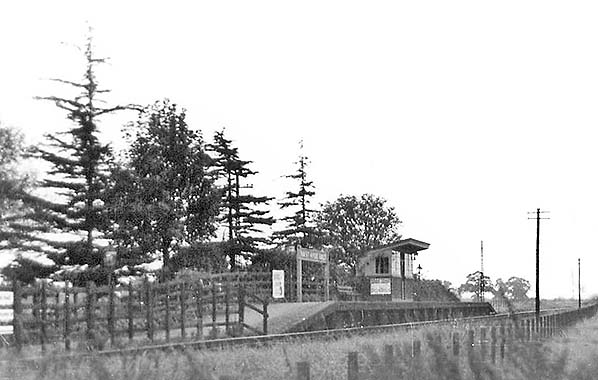
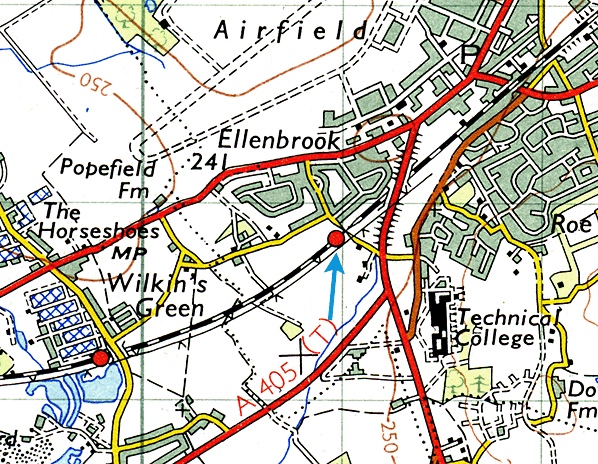


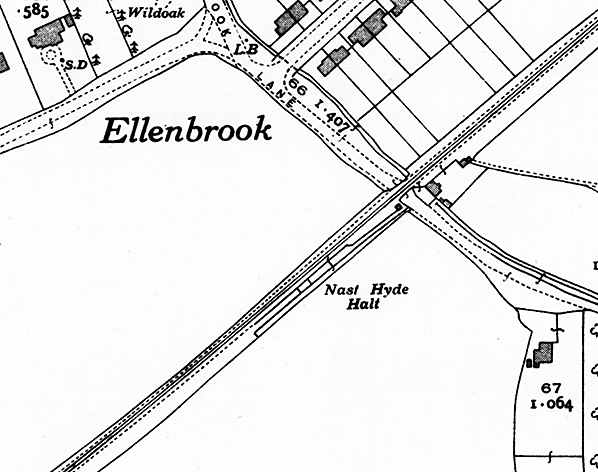
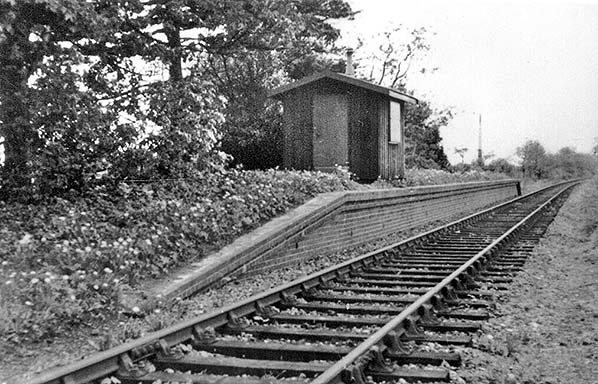
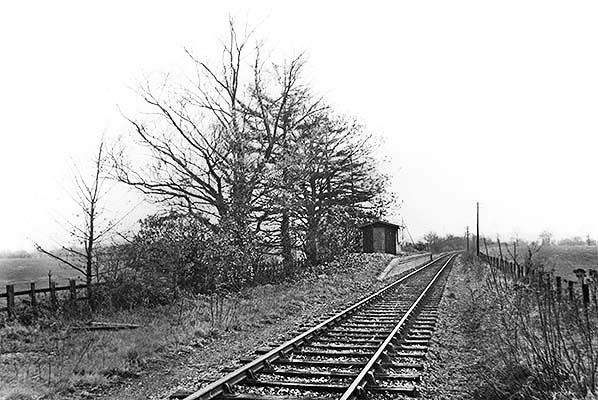
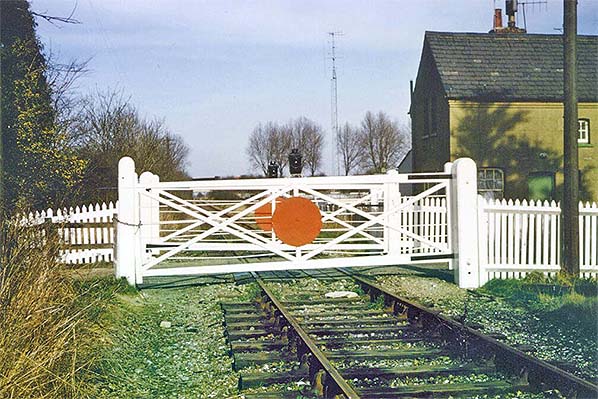 Ellenbrook Lane level crossing looking northeast in 1967.The crossing keeper's cottage still stands in private occupation.
Ellenbrook Lane level crossing looking northeast in 1967.The crossing keeper's cottage still stands in private occupation.
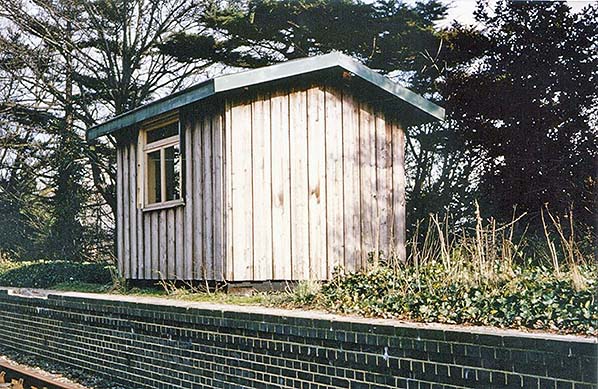
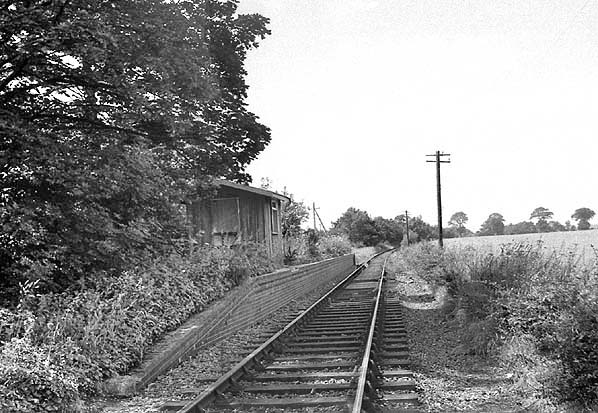
 Home Page
Home Page  The initial weekday service consisted of eight trains in each direction from St Albans and King's Cross, with a journey time of 15 minutes between Hatfield and St Albans. On weekdays, services went through to the LNWR's St Albans station, but on Sundays they terminated at the GNR station. Services were drawn by Sharp 2-2-2Ts until the 1870s, when Sharp 0-4-2T rebuilds and Sturrock 0-4-2Ts were used. The opening of the Midland Main Line through St Albans in 1868 saw receipts fall on the line and the Hatfield and St Albans Railway was unable to pay its debts. A receiver was appointed and the independent company had no choice but to be absorbed by the Great Northern, this being formalised by an Act of Parliament in 1883.
The initial weekday service consisted of eight trains in each direction from St Albans and King's Cross, with a journey time of 15 minutes between Hatfield and St Albans. On weekdays, services went through to the LNWR's St Albans station, but on Sundays they terminated at the GNR station. Services were drawn by Sharp 2-2-2Ts until the 1870s, when Sharp 0-4-2T rebuilds and Sturrock 0-4-2Ts were used. The opening of the Midland Main Line through St Albans in 1868 saw receipts fall on the line and the Hatfield and St Albans Railway was unable to pay its debts. A receiver was appointed and the independent company had no choice but to be absorbed by the Great Northern, this being formalised by an Act of Parliament in 1883. Goods services continued for a further 18 years; two goods trains per day in each direction ran in the summer of 1963, carrying mainly coal for the St Albans gasworks. The line continued to be unprofitable and general goods services were withdrawn on 5 October 1964. A weekly service continued until the end of the year to the Salvation Army siding in order to fulfil the contract, and banana trains ran to Butterwick siding when needed. As there was no traffic beyond this point, the rails were lifted from a point near Colney Lane Bridge to the junction with the Watford line. The remaining section of the line closed on 31 December 1968. A contract with a scrap metal dealer at Smallford had meant that trains ran there until the end of 1968.
Goods services continued for a further 18 years; two goods trains per day in each direction ran in the summer of 1963, carrying mainly coal for the St Albans gasworks. The line continued to be unprofitable and general goods services were withdrawn on 5 October 1964. A weekly service continued until the end of the year to the Salvation Army siding in order to fulfil the contract, and banana trains ran to Butterwick siding when needed. As there was no traffic beyond this point, the rails were lifted from a point near Colney Lane Bridge to the junction with the Watford line. The remaining section of the line closed on 31 December 1968. A contract with a scrap metal dealer at Smallford had meant that trains ran there until the end of 1968.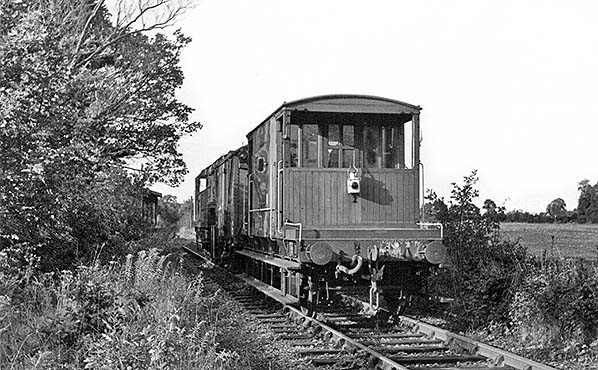 Banana train passing Nast Hyde Halt bound for Butterwick siding in 1967 hauled by British Rail Class 08 D3723.
Banana train passing Nast Hyde Halt bound for Butterwick siding in 1967 hauled by British Rail Class 08 D3723.